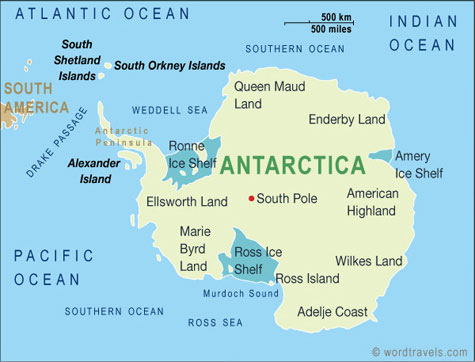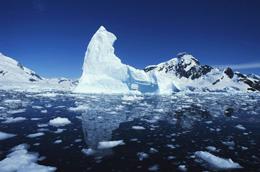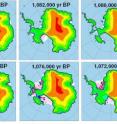 Cold, snowy, and stuck at the “bottom” of the Earth, Antarctica might seem like a dull place. But this big continent can produce a surprisingly dynamic range of conditions. One example of this range is temperature trends. Although Antarctica warmed around the perimeter from 1982 to 2004, where huge icebergs calved and some ice shelves disintegrated, it cooled closer to the pole.
Cold, snowy, and stuck at the “bottom” of the Earth, Antarctica might seem like a dull place. But this big continent can produce a surprisingly dynamic range of conditions. One example of this range is temperature trends. Although Antarctica warmed around the perimeter from 1982 to 2004, where huge icebergs calved and some ice shelves disintegrated, it cooled closer to the pole.The amount of sea ice around Antarctica has grown in recent Septembers in what could be an unusual side-effect of global warming, experts say.
In the southern hemisphere winter, when emperor penguins huddle together against the biting cold, ice on the sea around Antarctica has been increasing since the late 1970s, perhaps because climate change means shifts in winds, sea currents or snowfall.
At the other end of the planet, Arctic sea ice is now close to matching a September 2007 record low at the tail end of the northern summer, in a threat to the hunting lifestyles of indigenous peoples and creatures such as polar bears.
"The Antarctic wintertime ice extent increased...at a rate of 0.6% per decade" from 1979 to 2006, says Donald Cavalieri, a senior research scientist at the NASA Goddard Space Flight Center in Maryland.
At 19 million square kilometres, it is still slightly below records from the early 1970s of 20 million, he says. Since 1979 however, the average year-round ice extent has risen too.
Read more ....
My Comment: OK .... because it is getting warmer .... we now have more ice in the Antarctic. Is it me, but is this a contradiction?
Sigh..... this article makes no sense. Shame on The New Scientist, they should know better that you need to have data before making explanations on explaining a climatic effect.


















